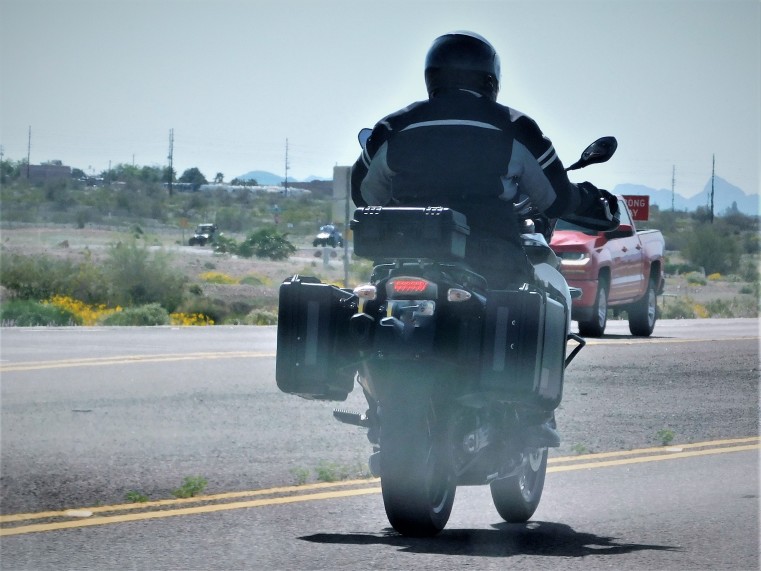Tips For Avoiding Collisions With Cars Backing Out of Driveways

Pedestrian Injured in Crosswalk by Motorcycle
May 24, 2022
Motorcyclist Rear-Ending on a City Street
May 24, 2022Drivers must exercise reasonable care when turning onto the road, especially when approaching a driveway. They must be alert, look both ways, and calculate a safe turning distance. If the car backs out of the driveway and causes a collision with a motorcycle, you can seek compensation for your injuries. Fortunately, the law protects motorcycle riders from these kinds of injuries. Below are some tips for avoiding collisions with cars backing out of driveways.
Safety protocol for intersections
The law does not give drivers the right of way, but the driver in the other vehicle must yield to it before proceeding. The yield to the driver on the right rule controls most intersections. Drivers must yield to motorcyclists, pedestrians, and vehicles entering the intersection from a crosswalk or an unpaved road. At a four-way stop, the driver on the left moves forward before the one on the right.

Before turning right or left, drivers should yield to motorcyclists, and they must yield to drivers on the sidewalk. They should also give the green light to pedestrians and should walk on the left shoulder. They should wear reflective clothing and carry flashlights to see where they are going. They must also avoid colliding with bicyclists and skateboarders, and yield to pedestrians in front of their vehicle.
Drivers must yield to motorcycles in the event of an accident. Motorcycles are much faster than other vehicles and following a motorcycle too closely could be disastrous. Drivers must also include motorcycles in their visual search pattern. Drivers must give motorcycles enough space to turn safely and keep their speed low when passing. It is important that you yield to motorcycles as often as possible.
Bicyclists may not change their turn signals after turning. Therefore, motorists should always make sure they know the cyclist’s intentions before moving into the motorcycle’s path. Bicyclists can change their lane position to anticipate traffic conditions. They may shift to the side of a road to avoid a danger or to make space for a lane that has more space.
Comparative fault in a motorcycle accident
There are many factors that can determine whether a plaintiff is entitled to damages if they are partially responsible for the crash. For example, the motorcyclist may have been partially at fault for the accident and may have had a percentage of the fault in the accident. Illinois has a modified comparative negligence rule that allows a plaintiff to recover only fifty percent of the total award. However, the plaintiff cannot be more fault than 50 percent.
The driver of the vehicle backing out from the driveway might try to blame the motorcycle rider. As a result, the compensation you receive may be less than if you were completely at fault. You may also be blamed by the other driver. In this case, the other driver may try to put some of the blame on you, so you can reduce your compensation. If you are 80 percent responsible, however, you can still recover 100% of your damages.
In Nevada, the motorcyclist’s insurance policy will determine whether you can collect compensation if you were partially at fault. Under this system, a plaintiff may collect compensation even if he or she was more than 50 percent at fault. You must establish the cause of the accident to make a claim. It is important to remember that the victim will not be compensated by the car’s insurer unless they are at least 50% at fault for the accident.
There are ways to avoid a collision when a car is backing out of your driveway.
The driver of a car backing out of a driveway or parking space is responsible for looking both ways before proceeding. While the driver of a parked vehicle is likely not doing anything to avoid a collision, the person backing out must be alert and cautious. If a child is playing in the driveway, make sure that you check his or her side mirrors for them. If possible, look over the left shoulder as well. If you have to reverse your vehicle, do it slowly.
Before backing out of a driveway, carefully check for children and pets. If there is, use a spotter to guide you into the spot. Trimming trees and bushes can help you see pedestrians more clearly. According to Kids and Cars, around 50 children are hit by cars each week in the U.S., with some being fatal. Make sure to follow the speed limit.
While reversing out of a driveway is not illegal, it is not recommended. The driver must yield to other cars and pedestrians in order to ensure safety. If a driver is backing out of a driveway and the car on the road behind it is speeding or performing a dangerous maneuver, they could be at fault. Whether or not the driver was at fault for the collision is a matter of judgment.
Unless the stationary vehicle in front of you is parked illegally, the driver is typically at fault. This is because they failed to look. A car backing out of a driveway has a duty to check its surroundings before backing out. If it fails to do so, they will likely be at fault. In case the driver is at fault, the car on the road has the right of way.
Before you back out of the driveway, be aware of the situation and avoid it altogether. If the car on the other side is backing out of a driveway, be sure to clean its windows and clear any objects on the road. Also, be patient as backing out of the driveway is not something that should be done lightly. As long as both vehicles are aware of each other’s presence, they should be able to avoid each other.
Injuries that result from a collision with a car backing out of a driveway
Injuries that result from a collision between a vehicle backing out of a driveway and a pedestrian are not uncommon. Backover accidents can occur when a driver backing out of a driveway collides with another vehicle, a pedestrian, or even a bicyclist. Sometimes, a vehicle backing out of a driveway will suddenly pull out headfirst into the traffic lane. While many of these collisions are minor, others can result in catastrophic injuries or even wrongful death.
A driver backing out of a driveway may not be aware that they are changing gears or may forget to do so. In such a case, a vehicle could strike an unsuspecting pedestrian or vehicle. Another common cause of backover collisions is distracted driving. Drivers who are distracted are unlikely to be aware of what is behind them, making it impossible to avoid a collision.
Injuries that result from a collision between a car backing out of a driveway and a car pulling out of a garage are not uncommon. The accident could have been prevented entirely if the driver of the other car had stopped and yielded the right of way. In either case, it is essential to report the accident to your insurance company to file a claim for compensation. Unfortunately, the at-fault driver is unlikely to receive compensation without collision insurance and a high deductible. Further, the accident may also be shared between the drivers of both cars, regardless of who was driving the other car or whether the car was backing out.
When a backed out driveway accident occurs, the driver of the other car should never admit fault, even if he is injured. An experienced Palm Desert Motorcycle Accident Attorney will help you gather evidence from the scene of the accident and can work with expert witnesses to determine whether or not the other driver is at fault. Often, injuries that result from a collision with a car backing out of a driveway are minor and do not require significant medical treatment.


